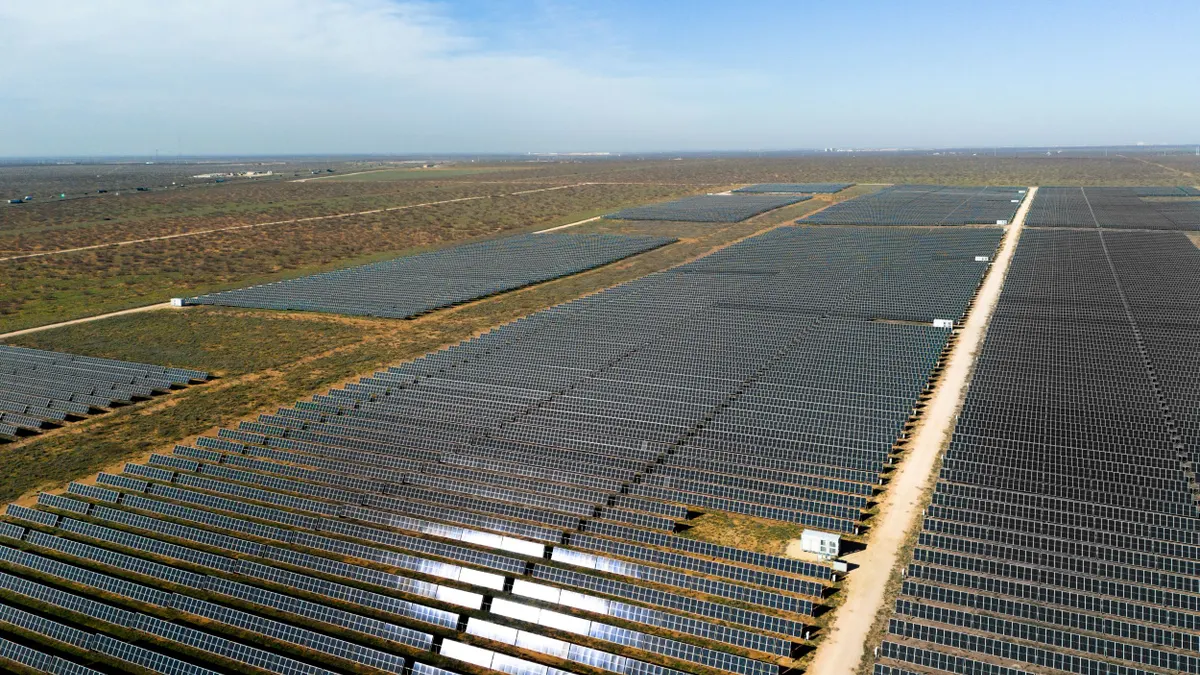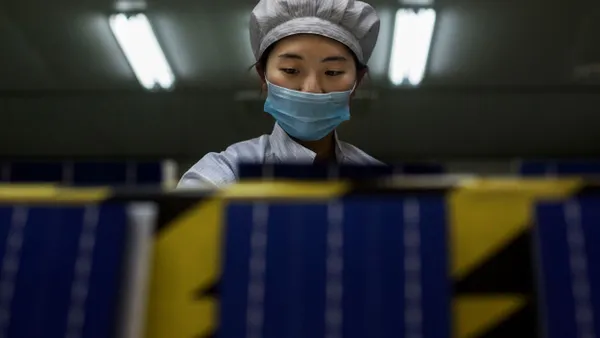If there was one identifiable theme to the ARPA-E Energy Innovation Summit for 2015, it was optimism about the future.
Whether it was the Secretary of Energy expressing hope for distributed storage or the SolarCity CEO predicting astronomical growth in his industry, everyone at the event seemed very aware that they are living during interesting times.
Here are some of the highlights from the conference:
Secretary of Energy: Storage and climate dreams
Fresh from his internet-famous State of the Union appearance, Energy Secretary Ernest Moniz spoke to his hopes for energy storage. He said costs are coming down fast, but they’re still not where they need to be for storage to be commercially viable.
“The model to cost for large scale production of today’s battery technology is less than $300 per kWh and the target is around $125 [per kWh] ,” he said. “So, we still have another factor of two and a half to go, but that’s come down from $600 [per kWh] in like no time at all.”
While the development of large grid-scale batteries is encouraging to the secretary, his dream is for distributed storage to become viable for everyday consumers
“If we can get to the 10 kWh home [battery] unit to be affordable, that becomes extremely interesting and can be transformational, including for business models,” he said.
After his discussion with Ratan Tata, Indian entrepreneur and former chair of the Tata Group, Utility Dive caught up with Moniz to ask him about the status of a climate change agreement with the Indian government. Decarbonization was not mentioned in his talk, but getting India to agree to emissions cuts is a major stumbling block to a global climate accord. Moniz said the recent U.S.-China climate agreement has changed the conversation with other nations.
“Honestly, I think the announcement in October in Beijing changed the discussion in many ways in many places,” he said. “We see it in lots and lots of other discussions that we’re having internationally, perhaps with the Congress as well. It was a game changing announcement and India is looking much more encouraging now.”
SolarCity CEO: Solar will be 50% of energy supply in 30 years
The CEO of the nation’s largest rooftop solar installer had a simple message for utilities: “There is no death spiral," Lyndon Rive said. It is a “change spiral.”
What Rive means is that he believes the much-ballyhooed cost-shift from solar owners to the rest of a utility’s rate base is a hoax. Instead, utilities face a revenue shift, he said, but even homes with solar tend to pay enough to cover the cost to serve them. This is becoming the company line at SolarCity—CTO Peter Rive penned a blog post earlier this week decrying the myth of cost shifting and offering solutions for utility revenue losses.
At times, it sounded like Lyndon was lifting lines from his brother’s blog post live on stage. Utilities have greatly over-exaggerated death spiral claims, he told the crowd, but they can make up for lost revenue if they’re allowed to partner with third party providers to provide energy services on the distribution system and behind the meter.
Rive touched on the subject of the federal investment tax credit (ITC) for solar power, saying it’s important to permanently keep the incentive to ensure a level playing field for all energy resources.
Rive pointed out that while we don’t always see it, all of our energy resources receive some sort of subsidy. The oil and gas industry alone, by his count, receives 13 separate tax incentives. That’s fine, keep them there, he said, but just don’t cut solar off. Tax payments from solar companies and owners far outweigh the ITC cost to government, he added.
“All energy is highly incentivized,” he said.
Rive concluded his remarks with a bold prediction: In 30 years, the U.S. will get half of its energy from solar power. With the ability to site generation near the consumer and the declining price of panels and storage, “it’s gonna happen,” he said.
Grid decentralization: A 'plug and play' grid is the goal
The trend toward grid decentralization is changing the utility industry, and as we saw at DistribuTECH, identifying ways to optimize grid processes and interconnectivity is more of a silver bullet than any single technology.
Doug Kim, director of advanced technology at Southern California Edison, told the audience that a “plug-and-play” grid is the goal. It's a vision of the future where the distribution system acts like a platform for a variety of devices and systems to plug in wherever they are useful. But the big question remains: How can the grid optimize those devices and connect them?
A market for energy devices and services at the distribution level could help make that plug and play dream a reality, said Jeff Taft, chief architect for electric grid transformation at the Pacific Northwest National Laboratory, but there are puzzling questions associated with such a notion. It’s not just a matter of creating a market and letting prices set themselves—there are significant technological roadblocks to identifying value for resources on the distribution system.
Managing an energy market centered around central station generation is difficult enough, echoed Jeff Bladen, executive director of market design for the Midcontinent Independent System Operator (MISO), but the value of distribution grid services is much more difficult to quantify. The same solar panel, for instance, may have drastically different value depending on its location.
Compounding those issues is the sheer number of devices that will be on distribution grids in the future — so many, Bladen said, that it will be impossible for a central planner to manage them all. The MISO executive told the audience it’s important for technology developers to make sure their devices are “economically fungible"—able to be bought and sold. By all accounts, it’s still early going in the quest to develop viable markets for the distribution system.
If there is one dream technology that can help in that journey, Kim said, it would be an accurate distribution system modeling tool. Things just aren’t as predictable beyond the substation as they used to be.
All of the panelists said they would like to see technology that allows utilities to control and and site distributed energy resources on the grid edge. There’s likely a lucrative business model around a technology that can get devices to “behave as if they are a coordinated whole,” Bladen said. He challenged the innovators in the room to get to work.
If any of those would-be technology developers needed a hint about the marketability of Bladen’s idea, Kim gave it to them.
“That would be a cool thing to have,” he agreed.





















